
Kathmandu, officially Kathmandu Metropolitan City, is the capital and most populous city of Nepal with 845,767 inhabitants living in 105,649 households in 2021 and 2.9 million people in its urban agglomeration. It is located in the Kathmandu Valley, a large valley in the high plateaus in central Nepal, at an altitude of 1,400 metres.
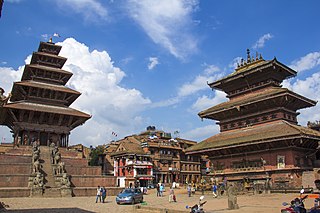
Bhaktapur, known locally as Khwopa and historically called Bhatgaon, is a city in the east corner of the Kathmandu Valley in Nepal located about 13 kilometres (8.1 mi) from the capital city, Kathmandu. Bhaktapur is the smallest city of Nepal as well the most densely populated. Along with Kathmandu and Lalitpur, Bhaktapur is one of the three main cities of the Kathmandu Valley and is a major Newar settlement of the country. The city is also known for its Newar tradition, cuisine and artisans. Bhaktapur suffered heavy damage in the April 2015 earthquake.

Bhairava, or Kala Bhairava, is a Shaivite and Vajrayāna deity worshiped by Hindus and Buddhists. In Shaivism, he is a powerful manifestation, or avatar, of Shiva associated with annihilation. In Trika system Bhairava represents Supreme Reality, synonymous to Para Brahman. Generally in Hinduism, Bhairava is also called Dandapani, as he holds a rod or Danda to punish sinners, and Svaśva, meaning "whose vehicle is a dog". In Vajrayana Buddhism, he is considered a fierce emanation of boddhisatva Mañjuśrī, and also called Heruka, Vajrabhairava, and Yamantaka.

Newar or Newari, known officially in Nepal as Nepal Bhasa, is a Sino-Tibetan language spoken by the Newar people, the indigenous inhabitants of Nepal Mandala, which consists of the Kathmandu Valley and surrounding regions in Nepal.

Newar or Nepami, are the historical inhabitants of the Kathmandu Valley and its surrounding areas in Nepal and the creators of its historic heritage and civilisation. Newars form a linguistic and cultural community of primarily Indo-Aryan and Tibeto-Burman ethnicities following Hinduism and Buddhism with Nepal Bhasa as their common language. Newars have developed a division of labour and a sophisticated urban civilisation not seen elsewhere in the Himalayan foothills. Newars have continued their age-old traditions and practices and pride themselves as the true custodians of the religion, culture and civilisation of Nepal. Newars are known for their contributions to culture, art and literature, trade, agriculture and cuisine. Today, they consistently rank as the most economically and socially advanced community of Nepal, according to the annual Human Development Index published by UNDP. Nepal's 2011 census ranks them as the nation's sixth-largest ethnicity/community, with 1,321,933 Newars throughout the country.
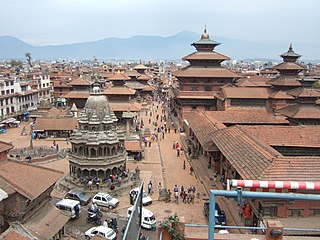
Lalitpur Metropolitan City is a Metropolitan city and fourth most populous city of Nepal with 299,843 inhabitants living in 49,044 households per 2021 census. It is located in the south-central part of Kathmandu Valley, a large valley in the high plateaus in central Nepal, at an altitude of 1,400 metres.

Kirtipur is a Municipality and an ancient city of Nepal. The Newars are the natives of Kipoo (Kirtipur) that is believed to be derived from Kirati King Yalamber. It is located in the Kathmandu Valley 5 km south-west of the city of Kathmandu. It is one of the five dense municipalities in the valley, the others being Kathmandu, Lalitpur, Bhaktapur and Madhyapur Thimi. It is one of the most famous and religious places to visit. Many people visit this place not only for its natural environment but also to visit temples. The city was listed as a UNESCO tentative site in 2008.
Buddhism in Nepal started spreading since the reign of Ashoka through Indian and Tibetan missionaries. The Kiratas were the first people in Nepal who embraced Gautama Buddha’s teachings, followed by the Licchavis and Newar people. Buddha was born in Lumbini in the Shakya Kingdom. Lumbini is considered to lie in present-day Rupandehi District, Lumbini zone of Nepal. Buddhism is the second-largest religion in Nepal. According to 2001 census, 10.74% of Nepal's population practiced Buddhism, consisting mainly of Tibeto-Burman-speaking ethnicities, the Newar. However, in the 2011 census, Buddhists made up just 9% of the country's population.
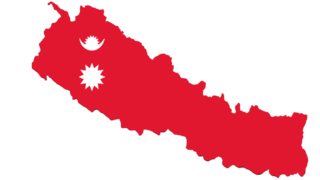
The culture of Nepal encompasses the various cultures belonging to the 125 distinct ethnic groups present in Nepal. The culture of Nepal is expressed through music and dance; art and craft; folklore; languages and literature; philosophy and religion; festivals and celebration; foods and drinks.
Pradhan is generally ministerial title of Sanskrit origin in cultures of Hindu tradition, mainly used in the Indian subcontinent. The Sanskrit pradhāna translates to "major" or "prime"; however, the more modern Hindi definitions provided by the Oxford Hindi-English Dictionary also include "chief" and "leader". The precise interpretation can differ significantly by region. The style was abandoned by many Indian princely states during the Mughal era in favor of Persian styles such as Wasir and Diwan.

The Malla dynasty was the ruling dynasty of the Kathmandu Valley in Nepal from 1201 to 1779. They were a Raghuvanshi dynasty who were seen as the descendants of the Licchavi dynasty. Later Malla kings also traced one section of their lineage from Nanyadeva, the founder of the Karnat dynasty of Mithila. The term malla means wrestler in Sanskrit. The first use of the word malla in the Kathmandu Valley begins from 1201. The Malla period was a golden one that stretched over 600 years, as they presided over and flourished the Newar civilization of Nepal Mandala which developed as one of the most sophisticated urban civilisation in the Himalayan foothills and a key destination in the India-Tibet trade route.

Newa music, also spelled Newar music, is traditional music developed in Nepal by the Newars. The music has its roots in classic Hindu and Buddhist music. It evolved with incorporation of folk music of the Kathmandu valley and its peripheries. Musical instruments mainly consist of percussion and wind instruments.
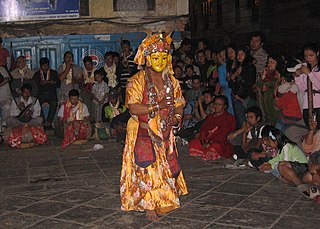
Newar Dance consists of the whole array of dances that are traditionally performed by Newars.
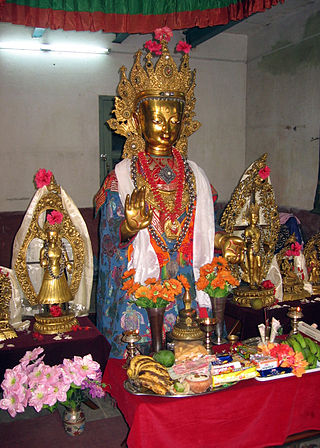
Newar Buddhism is the form of Vajrayana Buddhism practiced by the Newar people of the Kathmandu Valley, Nepal. It has developed unique socio-religious elements, which include a non-monastic Buddhist society based on the Newar caste system and patrilineality. The ritual priestly (guruju) caste, vajracharya and shakya form the non-celibate religious clergy caste while other Buddhist Newar castes like the Urāy act as patrons. Uray also patronise Tibetan Vajrayana, Theravadin, and even Japanese clerics. It is the oldest known sect of the Vajrayana tradition outdating the Tibetan school of Vajrayana by more than 600 years.

Newar caste system is the system by which Newārs, the historical inhabitants of Kathmandu Valley, are divided into groups on the basis of Vedic varna model and divided according to their hereditary occupations. First introduced at the time of the Licchavis, the Newar caste system assumed its present shape during the medieval Malla period. The Newar caste structure resembles more closely to North India and Madheshis than that of the Khas 'Parbatiyas' in that all four Varna and untouchables are represented. The social structure of Newars is unique as it is the last remaining example of a pre-Islamic North Indic civilisation in which Buddhist elements enjoy equal status with the Brahmanic elements.
Maharjan, is one of the Hindu Buddhist Newar castes or groups of Nepal, predominantly from Patan, Kirtipur, Bhaktapur and Kathmandu in Kathmandu Valley.. They are a major subgroup of the Jyapu ज्यापू: community inside the Newar community. Maharjan people along with the other subgroups of the same community are also known as Jyapus.
Rajopadhyaya is one of Newar Bramhans in Nepal.
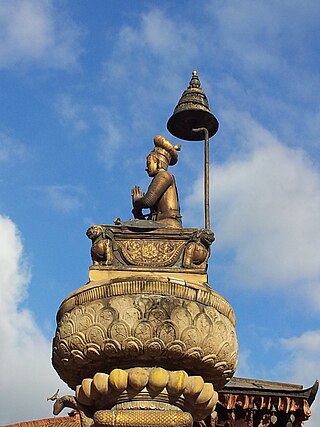
The Śreṣṭha or is the second largest Newar caste group, occupying around 21% of overall Newar population, or about 1.1% of Nepal’s total population. It is believed that the word Srēṣṭha is derived from the Newar word Śeśyah, which itself is derivation of a Sanskrit word Sista meaning 'noble', although literal meaning of the word also translated to 'best or important.' "Shrestha" itself was later adopted as the specific family surname by members of this high-caste Hindu group, although there are over 50 other recognized surnames of Srēṣṭhas. Despite their numerically low national population, their high-status and socio-economic capital puts Śreṣṭhas amongst the most socio-economically privileged and politically over-represented segments of Nepali population.
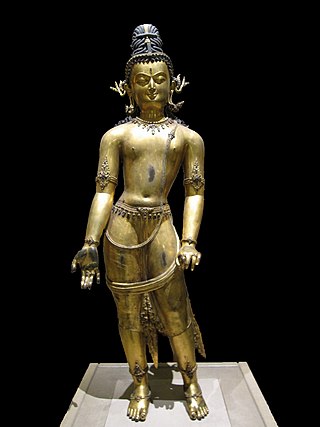
The sculpture of Nepal is best known for small religious figures and ritual objects in bronze or copper alloy, but also has other strengths. The Newar people of Nepal had a long-lasting specialism in casting small bronze figures, mostly religious and especially Buddhist, considerable numbers of which were exported to India and Tibet over many centuries.

The Head of Bhairava is a 16th century mask from the Malla dynasty of Nepal that depicts the deity Bhairava. It was originally found in the Kathmandu Valley of Nepal and is currently held as part of the Zimmerman Family Collection at the Metropolitan Museum of Art in New York City.















